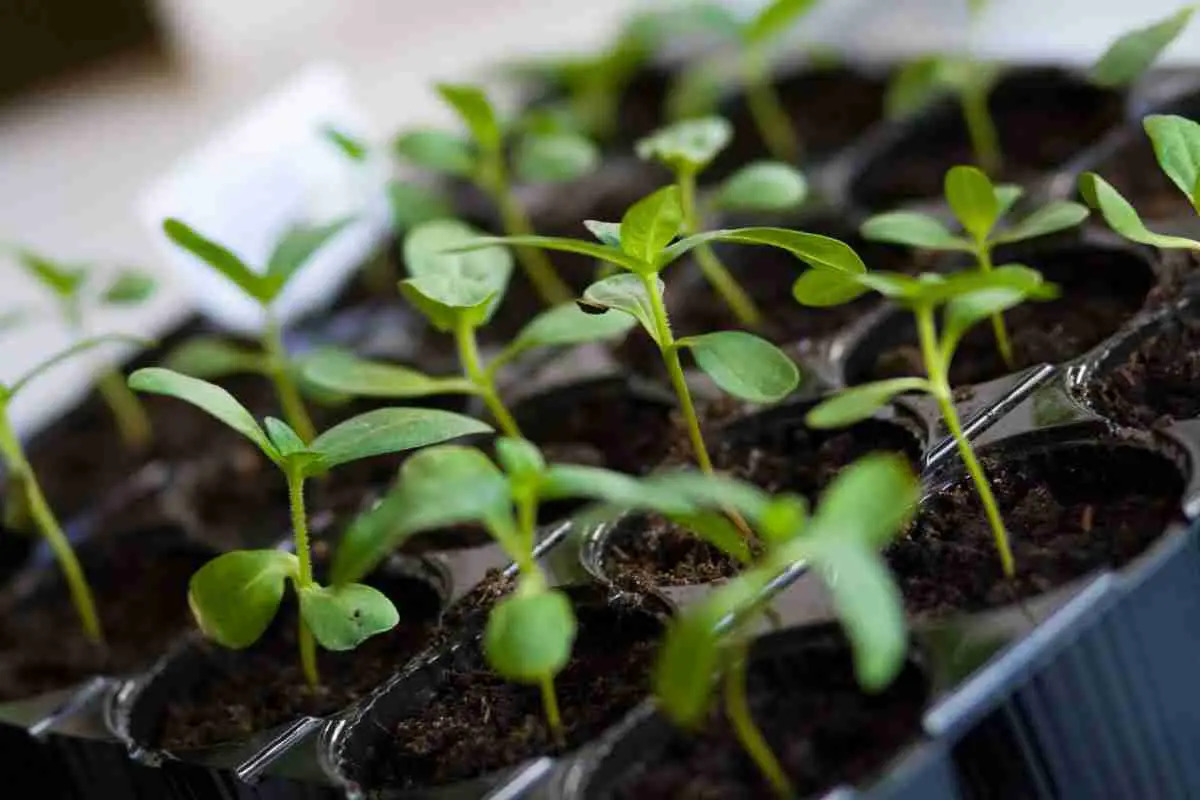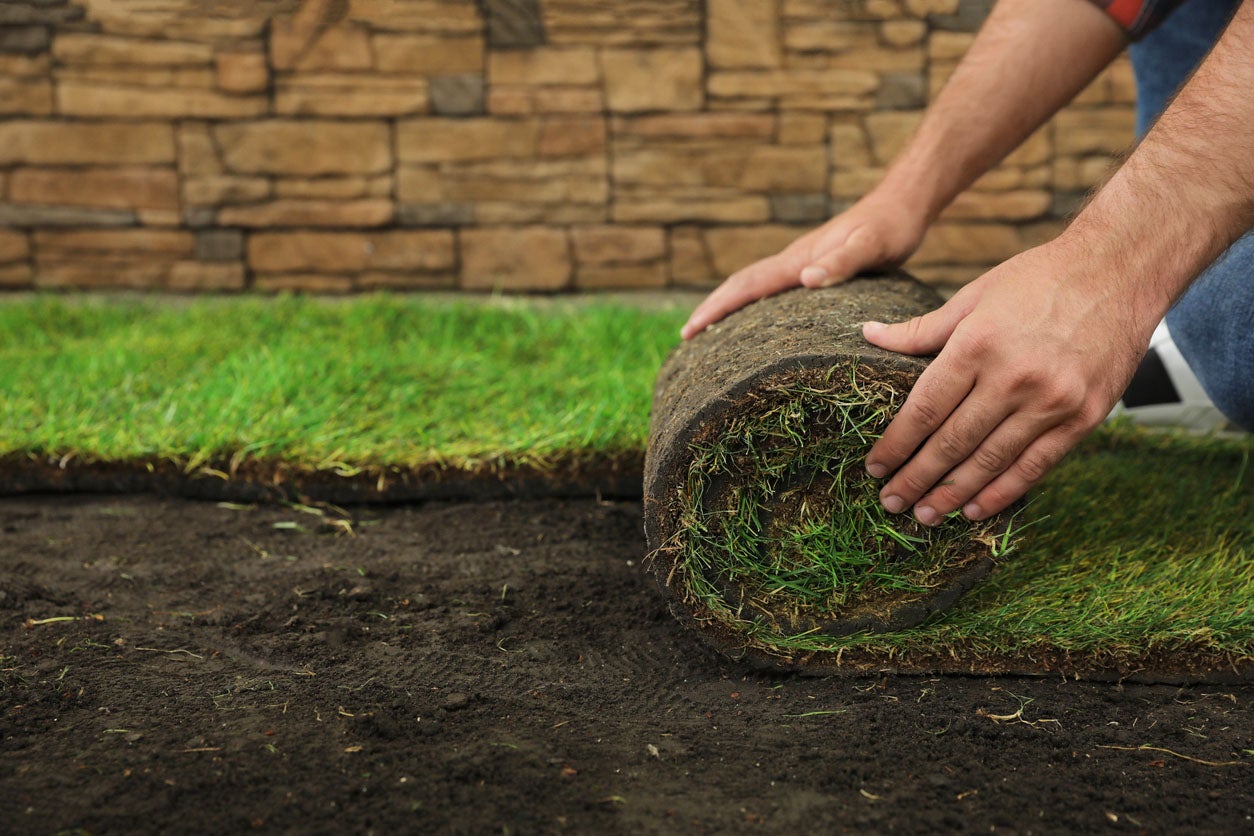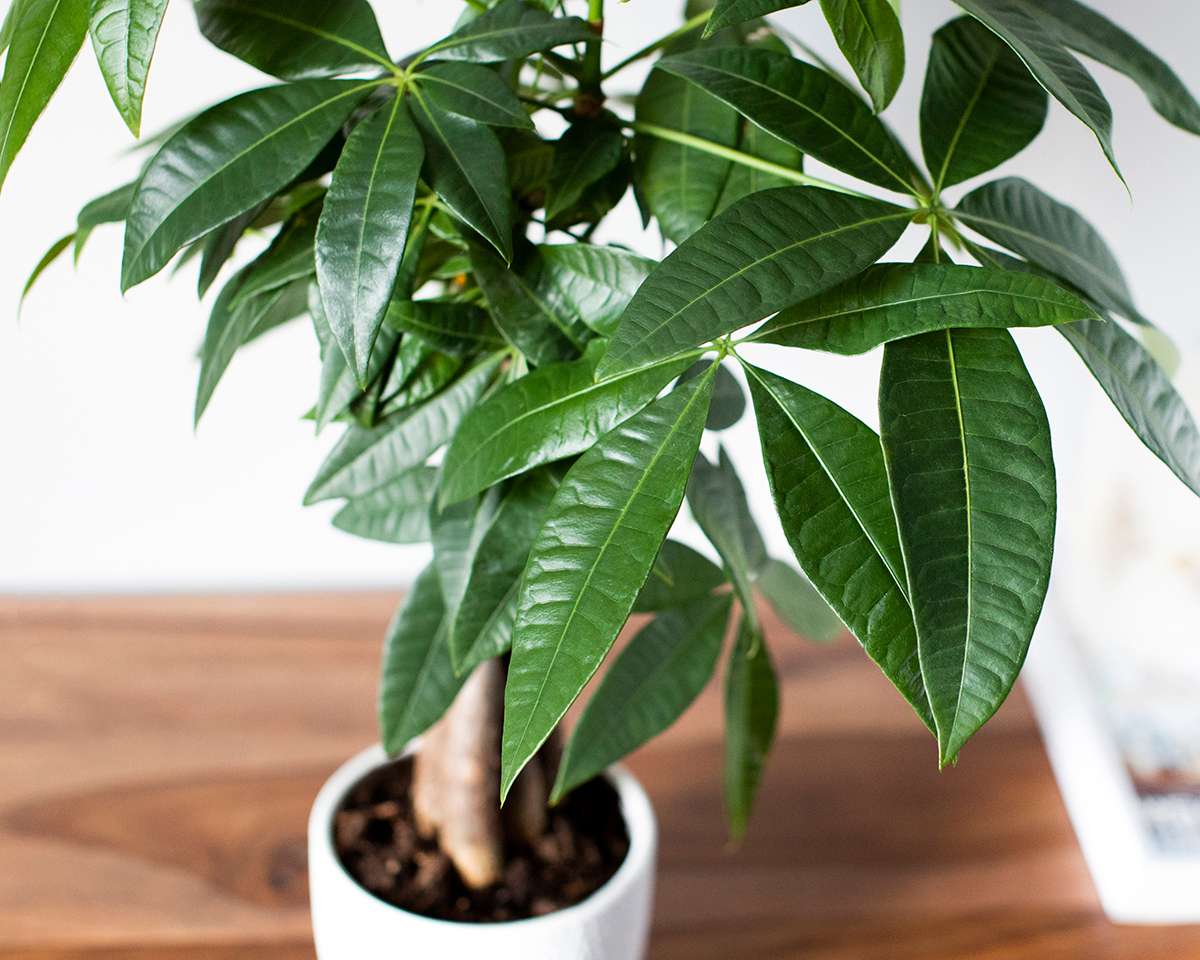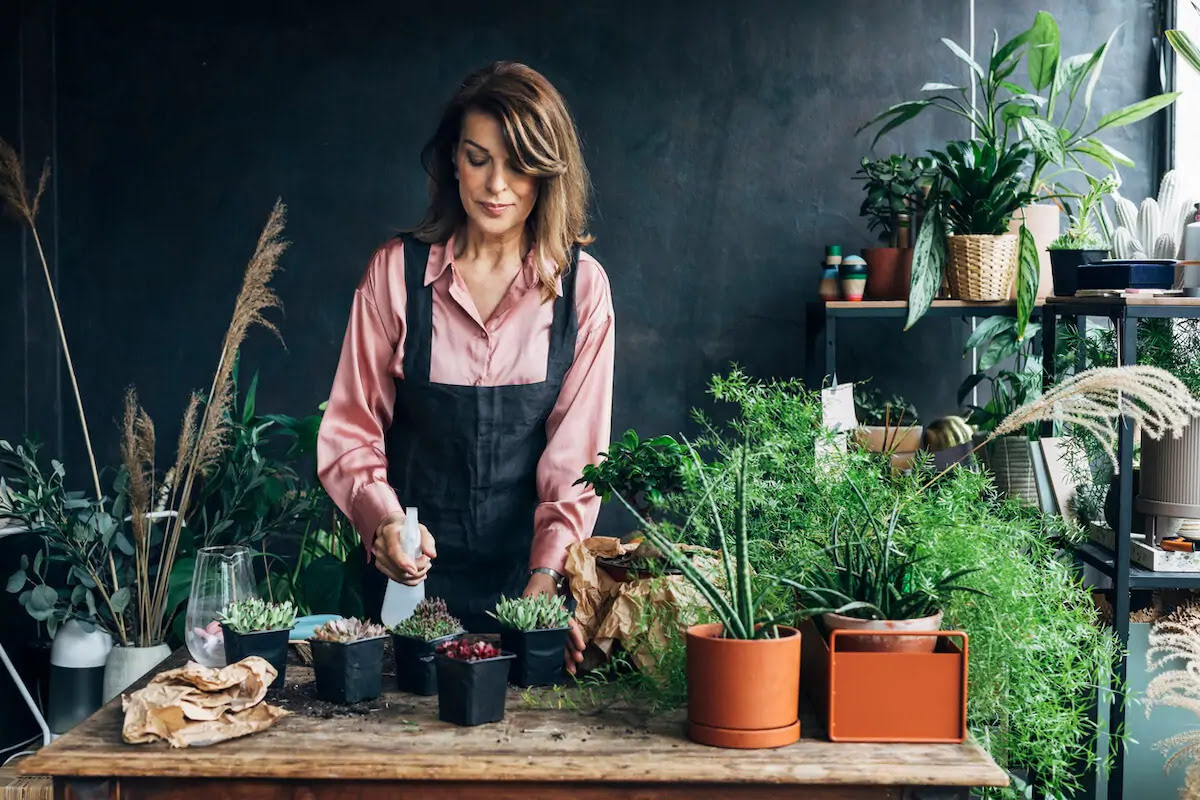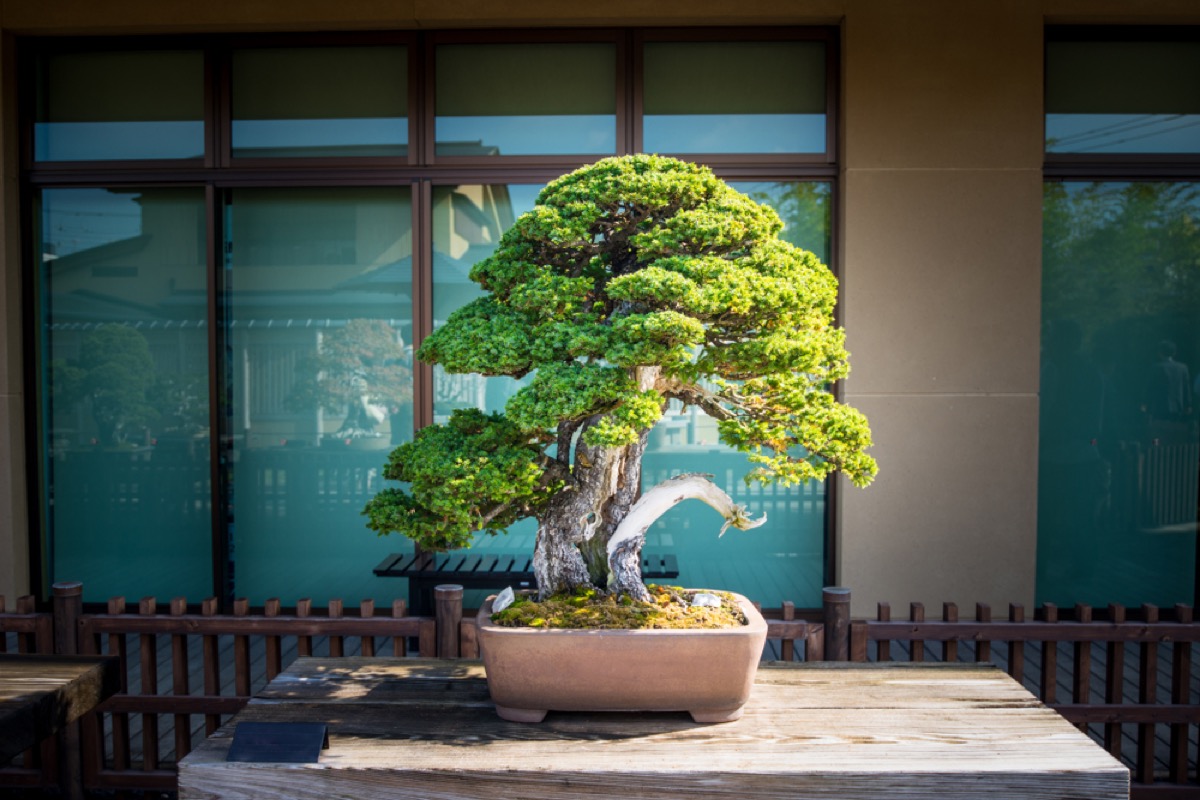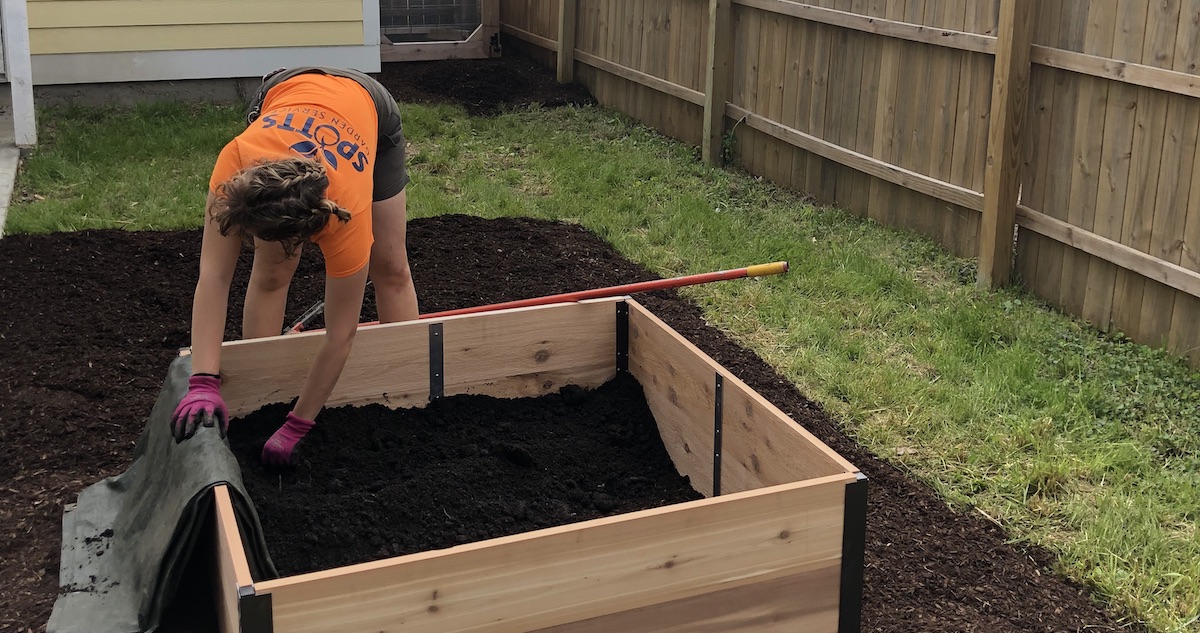Home>Types of Gardening>Edible Gardening>How Much Space Do Herbs Need
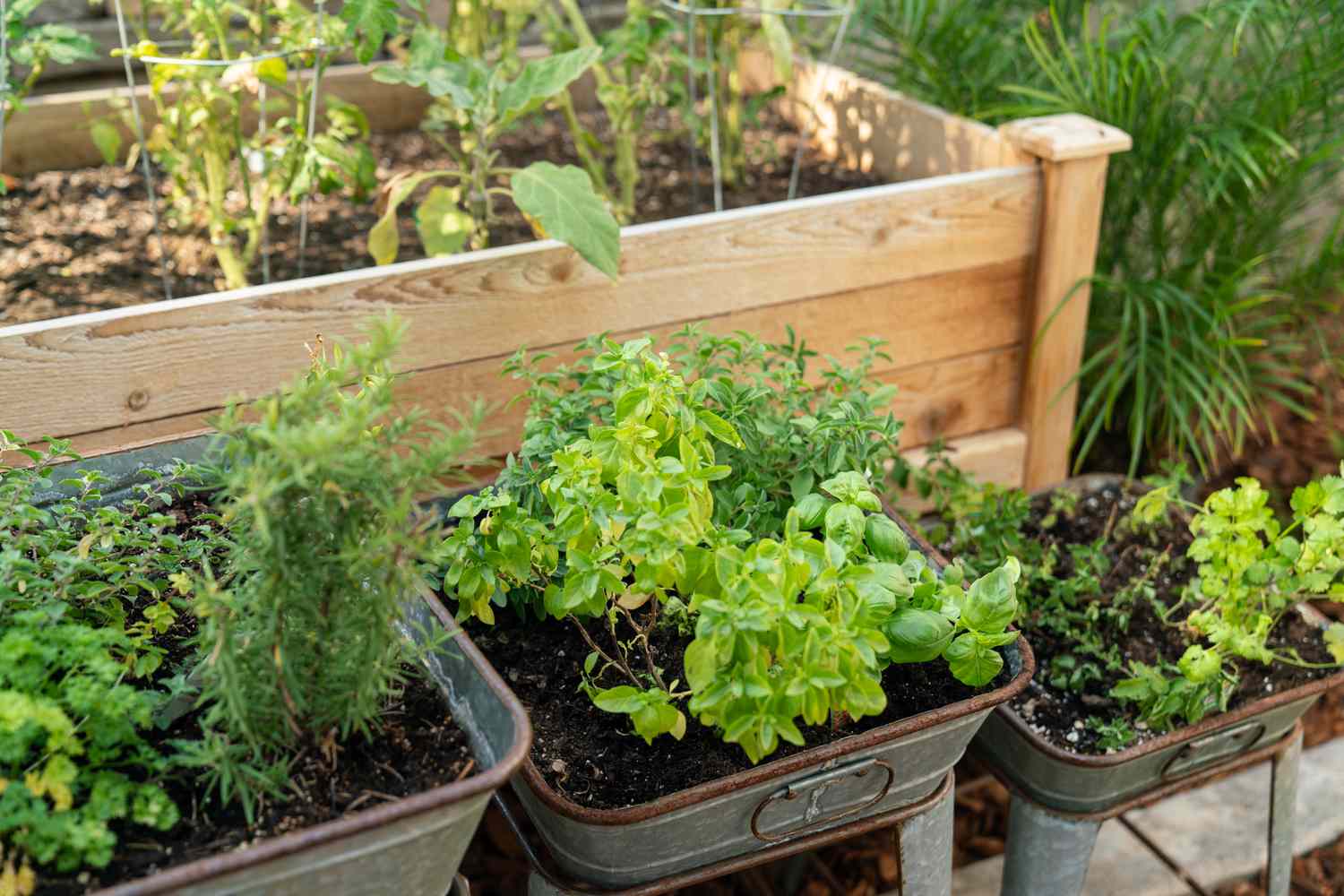

Edible Gardening
How Much Space Do Herbs Need
Modified: February 10, 2024
Discover how much space herbs need for successful edible gardening. Learn about the optimal growing conditions and spacing requirements for various herbs.
(Many of the links in this article redirect to a specific reviewed product. Your purchase of these products through affiliate links helps to generate commission for Chicagolandgardening.com, at no extra cost. Learn more)
Table of Contents
Introduction
Edible gardening is a rewarding and fulfilling activity that allows individuals to grow their own food and connect with nature. Among the various types of edible plants, herbs stand out for their versatility and ability to add flavor and aroma to culinary creations. Whether you have a sprawling backyard or a small balcony, growing herbs is a fantastic way to incorporate freshness into your everyday meals.
One important aspect to consider when cultivating herbs is the amount of space they require. Proper spacing not only promotes healthy growth and development but also ensures optimal access to sunlight, nutrients, and air circulation. Understanding herb spacing is crucial for their overall well-being and productivity.
In this article, we will delve into the world of herb spacing and provide comprehensive guidelines for various common herbs. We will also explore innovative space-saving ideas and methods for those with limited gardening space. Whether you are a beginner or an expert gardener, this article will equip you with the knowledge and inspiration to create a thriving and productive herb garden.
So, let’s dive in and discover how much space your herbs need to flourish!
Understanding Herb Spacing
Proper herb spacing is vital for the healthy growth and development of your plants. It allows each herb to receive adequate sunlight, water, and airflow, reducing the risk of diseases and promoting optimal yield. Understanding the factors that influence herb spacing will help you create an environment where your herbs can thrive.
One key factor to consider is the size of the mature herb. Some herbs, like basil or dill, can grow quite tall and bushy, while others, such as thyme or oregano, tend to spread out and sprawl. Knowing the growth habits of your herbs will determine the distance needed between each plant.
Additionally, consider the root system of each herb. Some herbs, like mint or chives, have aggressive spreading roots, while others, such as parsley or cilantro, have more compact root systems. This information will influence the spacing needed to prevent overcrowding and competition for nutrients.
Another crucial aspect to keep in mind is the cultivation method. If you plan to grow herbs in containers, they will require more space compared to herbs planted directly in the ground. Container-grown herbs need ample room for their roots to expand, ensuring optimal nutrient uptake and preventing root-bound issues.
The climate and growing conditions in your area should also be considered. In warmer climates where herbs tend to grow more vigorously, you may need to space your plants slightly farther apart to allow for better airflow and prevent overcrowding. Conversely, in cooler climates with slower-growing herbs, you can space them a bit closer together.
Lastly, the specific purpose for growing your herbs should be taken into account. If you plan to primarily use your herbs for culinary purposes, ample space between plants will allow for larger, healthier leaves. On the other hand, if you plan to primarily harvest the seeds, allowing for more plants in a given area will increase seed production.
By considering these factors, you will be able to determine the appropriate spacing for your herbs, creating an environment that promotes healthy growth, maximizes yield, and enhances the overall beauty of your herb garden.
Factors to Consider
When deciding on the spacing for your herbs, there are several factors to consider. By taking these factors into account, you can ensure that your herbs have ample space to thrive and reach their full potential.
Firstly, consider the specific requirements of each herb. Some herbs, like rosemary and sage, are more drought-tolerant and prefer drier soil conditions. These herbs can be spaced a bit closer together as they don’t require as much water or nutrients. On the other hand, herbs like basil and parsley prefer moister soil and benefit from wider spacing to prevent competition for resources.
Next, think about the growth habits of your herbs. Herbs like mint and oregano tend to spread vigorously, while herbs like thyme and marjoram grow more compactly. Take into account the mature size of each herb and give them enough space to grow without overcrowding each other.
Sunlight is another important factor to consider. Most herbs thrive in full sun, which means they need at least 6-8 hours of direct sunlight per day. When planning your herb garden, make sure to space the plants in a way that allows all of them to receive adequate sunlight. Placing taller herbs at the back and shorter ones in the front can help ensure even sun exposure.
Consider the fertility of your soil as well. Some herbs, like chives and mint, are known to be quite hardy and can tolerate a wide range of soil conditions. Others, such as basil and cilantro, prefer nutrient-rich soil. Adjust your spacing accordingly to provide the necessary nutrients for each herb based on their individual requirements.
Air circulation is often overlooked but plays a critical role in preventing the development of diseases and fungal infections. Proper spacing between herbs allows for better airflow, reducing the risk of moisture buildup and promoting a healthier growing environment.
Lastly, consider the aesthetics of your herb garden. Spacing your herbs in an organized and visually pleasing manner can enhance the overall beauty of your garden. You can create patterns or group herbs with similar growth habits together to create a harmonious and visually appealing arrangement.
By considering these factors – specific herb requirements, growth habits, sunlight, soil fertility, air circulation, and aesthetics – you can determine the optimal spacing for your herbs. This will result in a thriving and productive herb garden that not only provides you with fresh flavors at your fingertips but also adds beauty and charm to your outdoor space.
Spacing Guidelines for Common Herbs
Each herb has its own spacing requirements based on its growth habit, size, and specific needs. Here are some general guidelines to help you determine the appropriate spacing for common herbs:
- Basil: Space basil plants 12-18 inches apart to allow for air circulation and prevent overcrowding. This spacing will accommodate the bushy nature of basil plants and encourage robust growth.
- Parsley: Plant parsley 6-8 inches apart. This spacing allows the plants to develop their signature lacy leaves and encourages the growth of multiple stems.
- Mint: Due to its vigorous spreading habit, mint should be spaced around 24 inches apart. You can also consider planting mint in containers to prevent its invasive growth in garden beds.
- Thyme: Space thyme plants approximately 8-12 inches apart to give each plant enough room to spread and thrive. Thyme enjoys full sun, so ensure the spacing allows for proper sunlight exposure.
- Rosemary: Rosemary should be spaced around 24-36 inches apart, as it tends to grow into a large, woody shrub. The ample spacing also ensures good air circulation for the plant.
- Sage: Give sage plants about 24 inches of space between each other. This spacing allows the plants to develop their full bushy shape while providing enough air circulation.
- Cilantro: Plant cilantro 4-6 inches apart. This spacing will allow for adequate airflow and prevent the plants from becoming overcrowded, promoting healthy leaf growth.
- Dill: Dill plants should be spaced around 12 inches apart to accommodate their tall and lanky growth habit. This spacing will also provide enough room for each plant to develop its characteristic feathery foliage.
- Oregano: Space oregano plants around 12-18 inches apart to allow them to spread and fill out. This spacing will promote healthy growth and prevent the plants from competing for resources.
- Chives: Plant chives around 6 inches apart to give each plant enough space to develop into clumps. This spacing will allow for the growth of numerous slender leaves.
Remember, these are general guidelines and can vary depending on the specific variety of each herb and your local growing conditions. It’s always a good idea to refer to the specific recommendations on the seed packet or plant label for more precise spacing instructions.
By following these spacing guidelines, you can create a well-organized and productive herb garden where each herb has ample space to thrive and contribute its unique flavors and aromas to your culinary ventures.
Caring for Herbs with Limited Space
If you have limited space for your herb garden, there are still several ways to ensure the health and productivity of your herbs. Follow these care tips to make the most of your small gardening area:
1. Proper Watering: Pay close attention to the water needs of your herbs. Be careful not to overwater, as this can lead to root rot, especially in containers. Stick your finger into the soil to check for moisture before watering and adjust accordingly.
2. Soil Quality: Use high-quality, well-draining soil enriched with organic matter. Good soil fertility and structure will provide essential nutrients to your herbs in a limited space, allowing them to grow and thrive.
3. Fertilization: Feed your herbs regularly with a balanced organic fertilizer to ensure they receive the necessary nutrients. Be mindful of following the recommended dosage, as overfertilizing can lead to excessive growth and lower the quality of your herbs.
4. Pruning and Harvesting: Regularly prune your herbs to encourage bushier growth and prevent legginess. Harvesting frequently will not only provide you with fresh herbs but also stimulate new growth and help maintain compactness.
5. Companion Planting: Utilize companion planting techniques to maximize your limited space. Some herbs, like sage and rosemary, can act as natural deterrents to pests when planted with other susceptible herbs like basil or parsley.
6. Vertical Gardening: Take advantage of vertical space by growing herbs on trellises, walls, or hanging baskets. Herbs like thyme, oregano, and creeping rosemary can be trained to grow upwards, saving space while adding visual interest to your garden.
7. Regular Maintenance: Stay on top of weed control and remove any unwanted plants that compete for space and nutrients. Check for signs of pests or diseases and take appropriate action to prevent the spread and ensure the health of your herbs.
8. Container Gardening: If you have limited outdoor space, consider growing herbs in containers. Use well-draining pots with proper drainage holes, and select dwarf or compact varieties where possible. Place containers strategically to optimize sunlight exposure.
9. Succession Planting: Practice succession planting by sowing seeds or planting new herbs in stages. This ensures a continuous supply of fresh herbs and maximizes the use of your limited space throughout the growing season.
10. Regular Observation: Observe your herbs closely for any signs of stress, nutrient deficiencies, or pests. Early detection and intervention can prevent issues from escalating and help maintain the health and productivity of your herbs.
By implementing these care tips, you can successfully cultivate a thriving herb garden in a limited space. Remember, even with minimal area, with the right care and attention, your herbs can provide you with an abundance of flavors and aromas to elevate your culinary adventures.
Creative Space-Saving Ideas for Herb Gardens
If you’re tight on gardening space, don’t worry! There are plenty of creative ideas to maximize the use of your available area and create a beautiful and functional herb garden. Here are some space-saving techniques to consider:
- Vertical Herb Wall: Install a vertical herb wall using hanging planters or pocket organizers. This allows you to grow herbs vertically, saving precious floor or ground space. Choose herbs with trailing or cascading growth habits for optimal effect.
- Window Sill Gardens: Utilize windowsills or narrow ledges by placing small pots or herb planters. This not only adds a touch of greenery indoors but also makes harvesting herbs convenient for your culinary pursuits.
- Hanging Baskets: Hang herb-filled baskets from railings, pergolas, or trellises. Not only does this free up ground space, but it also adds an eye-catching element to your garden. Choose lightweight pots or baskets to avoid straining supports.
- Herb Towers: Create vertical herb towers using stacked pots or containers with supports in the center. This vertical structure allows you to grow multiple herbs in a compact footprint, making the most of limited space.
- Window Boxes: Attach window boxes outside your windows, balcony railings, or fences to grow herbs. This not only adds charm to your surroundings but also makes it easy to access fresh herbs for cooking.
- Herb Spirals: Construct herb spirals in small garden areas. This design allows you to grow multiple herbs in a spiral pattern, utilizing vertical space and creating different microclimates for herbs with varying sun and moisture preferences.
- Herb Stacking: Utilize stackable planters or tiered herb gardens to grow multiple herbs in a compact footprint. This method provides ample growing space while creating an interesting visual display.
- Tabletop or Hanging Herb Gardens: Use tabletop planters or hanging herb gardens that can be easily mounted on walls or hung from ceilings. These portable gardens can be moved around as needed and are perfect for small apartments or balconies.
- Herb Pallet Garden: Repurpose wooden pallets and transform them into vertical herb gardens. Attach small pots or plant herb cuttings in the slats, and lean the pallet against a wall or fence for a unique and space-saving herb display.
- Trellis Systems: Install trellis systems or mesh panels to grow climbing herbs like beans or vine herbs like cucumbers. This allows you to utilize vertical space while incorporating herbs into a multi-functional garden space.
With these creative space-saving ideas, you can transform even the smallest areas into a thriving and productive herb garden. Mix and match these techniques to suit your available space and personal style, and enjoy the convenience of having fresh herbs at your fingertips.
Conclusion
Creating an edible garden with a variety of herbs is not only a delightful and rewarding experience but also a practical way to incorporate fresh flavors into your cooking. By understanding the importance of herb spacing and considering factors such as growth habits, root systems, and cultivation methods, you can provide your herbs with the optimal space they need to thrive.
We discussed spacing guidelines for common herbs like basil, parsley, mint, and rosemary, among others, providing you with a starting point for your herb garden planning. However, it’s important to remember that these guidelines can vary depending on the specific variety of the herb and your growing conditions. Always refer to the instructions provided on seed packets or plant labels to tailor the spacing to the individual needs of each herb.
For those with limited gardening space, we explored creative ideas to maximize space usage, such as vertical herb walls, hanging baskets, window sill gardens, and herb towers. These space-saving techniques not only optimize the available area but also add visual interest and functionality to your herb garden.
To care for your herbs in a confined space, remember to provide proper watering, ensure soil quality, fertilize appropriately, and practice regular pruning and harvesting. Companion planting, vertical gardening, and container gardening can further enhance the productivity and aesthetics of your limited-space herb garden.
No matter the size of your gardening area, the joy of growing and harvesting your own herbs is unparalleled. So, whether you have a sprawling backyard or a compact balcony, embrace the opportunity to cultivate an edible garden that not only brings fresh flavors to your meals but also reconnects you with nature.
Start planning your herb garden today, and watch as it flourishes into a vibrant and aromatic oasis that adds beauty, joy, and sustenance to your life.
